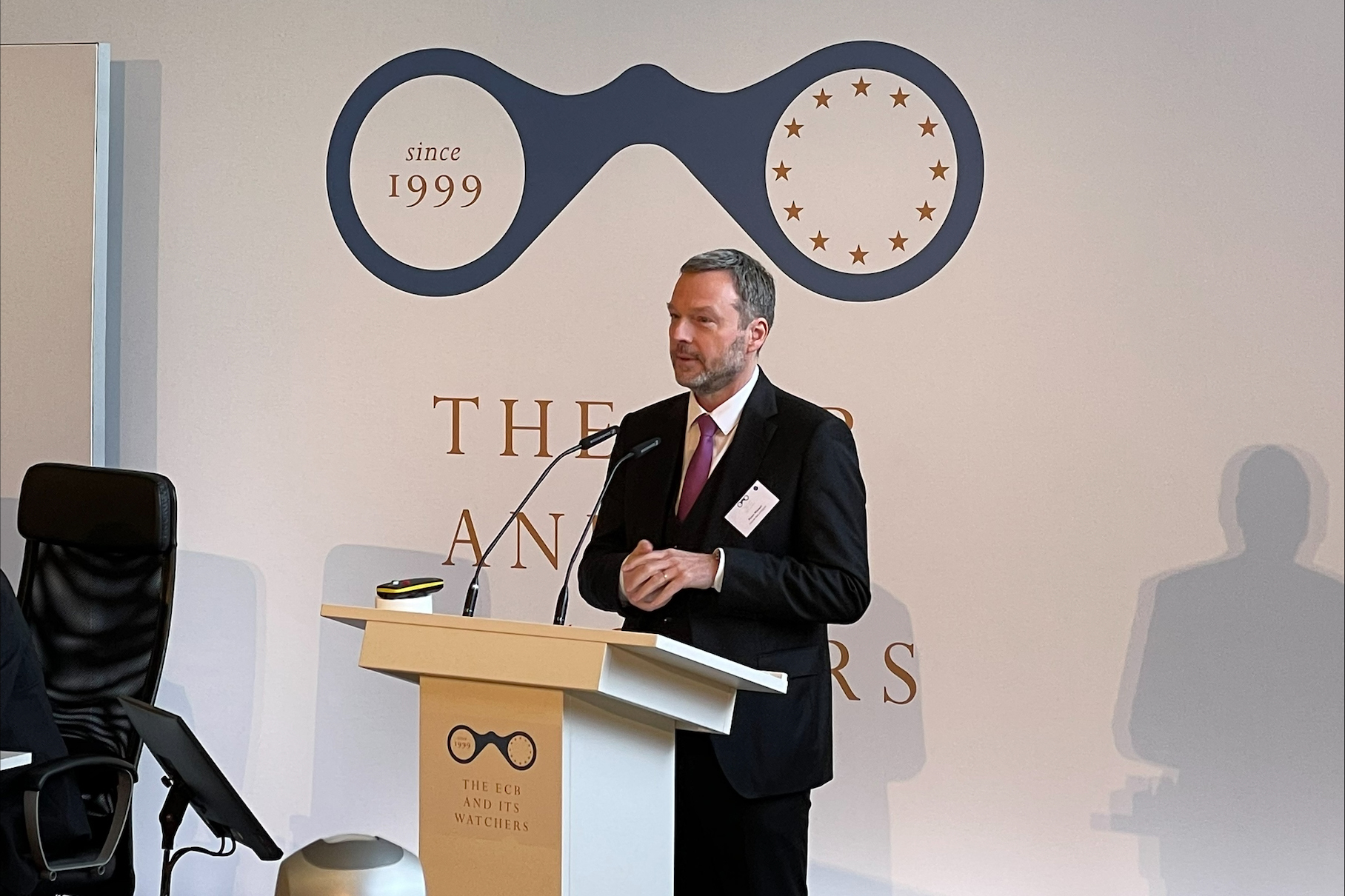Two sides of the same coin: money supply, budget deficits and inflation

The conventional mantra that inflation is always a monetary phenomenon – inflation means that too much money is circulating in the economy – glosses over the deeper reasons as to why money is printed in the first place. The answer to this question can be found in the institutional framework governing both monetary and fiscal policies. In the euro area, this framework mainly consists of two treaty obligations: (1) the mandate of the European Central Bank (ECB) to ensure price stability (in practice, aiming for 2% inflation over the medium term) and (2) a prohibition on public deficits exceeding 3% of GDP.
Like most modern central banks, the ECB benefits from strict guarantees which ensure that it can pursue its objectives free from political interference. The goal of money issuance is to achieve price stability, whereas governments must ensure that public debt levels are sustainable. For over 30 years, this division of responsibilities between monetary and fiscal policymakers resulted in low, stable inflation. In this blog post, I examine the foundations of the institutional framework and the threats to which it is potentially exposed following a long period of free money and wide deficits.
The separation of monetary and fiscal powers: how did it come about?
Fiscal and monetary policymakers are conjoined twins. First, they both influence total demand in the economy (so-called aggregate demand). If aggregate demand outpaces supply, prices rise. This is what we call inflation. The opposite holds true if demand lags behind supply. Second, money is a liability for a central bank, an institution which forms part of the public sector. In that sense, it is a special type of public debt, one that also serves as legal tender to settle other liabilities, including government (or sovereign) bonds. Thus, printing money can be a convenient way of funding public expenditure.
When monetary and fiscal powers are concentrated in the hands of the political authorities, as was often the case until the early 1990s, deficits can be financed either by printing money (monetisation) or by issuing bonds (public debt). The risk posed by this concentration of powers is obvious: profligate governments may be tempted to print money for the sole purpose of funding rash spending and thus fail to maintain price stability. The combination of a high public deficit and excessive money printing will push demand well beyond supply, causing inflation to surge. This is what we see in countries such as Argentina.
Thus, separating monetary and fiscal powers acknowledges that printing money and issuing sovereign bonds are different and should not be treated interchangeably if inflation is to remain under control. The institutional split between the treasury and the central bank implies that the latter must print just enough money to keep demand and supply well aligned and consistent with the inflation target. With this in mind, the treasury is expected to avoid running a deficit that would cause public debt to reach a level the government cannot afford to service with its own revenue.
During the Keynesian heydays of the 1950s-1970s, the policy debate was dominated by the notion of a “policy mix” geared towards managing aggregate demand. The separation of monetary and fiscal powers was at best a rhetorical question. A rare exception was Germany, a country still traumatised by the memory of uncontrolled deficit monetisation that led to the hyperinflation of the 1920s.
The rise of inflation in the 1970s drastically shifted the debate. Not unlike recently, an oil price shock undermined supply conditions in economies accustomed to cheap energy. The realisation that inflation was becoming entrenched ultimately led to a dramatic rise in interest rates and a slowdown in money creation. To this day, the name of Federal Reserve Chairman Paul Volker remains associated with this stunning turnaround. During the 1980s, demand and supply realigned, inflation fell, and credit conditions eased considerably.
In the 1990s, a consensus emerged on splitting monetary and fiscal responsibilities. Central banks were entrusted with steering monetary policy to ensure price stability, and fiscal policy was not supposed to hinder this objective. This entailed limiting government bond issuances to levels that would avoid the temptation to monetise deficits. When it came to balancing supply and demand, monetary policy was said to be dominant because it could always offset the demand impact of possible fiscal excesses. While monetary dominance requires “active” management of aggregate demand, fiscal policy has to remain “passive” in that regard, focusing instead on the other objectives of public finances (such as the efficient provision of public goods and income redistribution).
Not surprisingly, this split came at the cost of regular coordination failures in the policy mix. Too often, fiscal profligacy forced monetary policy to be tighter than it had to be. In Europe, the adoption of legal limits on deficits and public debt was meant to improve the policy mix and, in a context characterised by multiple treasuries interacting with a single central bank, secure the area-wide monetary dominance required for price stability.
From lowflation to Covid-19 in the euro area
Following the 2007-2008 global financial crisis, inflation remained too low for too long (a situation dubbed “lowflation”), especially in the euro area. Monetary policy was increasingly seen as losing traction despite extremely low interest rates. Many, including central bankers, started dreaming about fiscal policy coming to the rescue. They argued that, with inflation below target, fiscal policy could play a more active role.
When the Covid-19 pandemic hit, inflation fell further. As investors and consumers were unable to respond to lower interest rates and cheap credit, monetary policy could only be effective through the government’s role as the spender of last resort. Thus, monetary policymakers created room for governments to borrow substantially at historically low rates, and governments effectively used that space to protect citizens and businesses from the devastating impact of the pandemic-related restrictions. Some even referred to the fiscal transmission channel for monetary policy. The policy mix was back on track.
When the restrictive measures were lifted, demand rebounded immediately, but supply recovered more slowly, pushing inflation moderately up. Supply chains remained stressed due to unexpected changes in consumption patterns and lingering restrictions affecting producers of key inputs (such as in China), while frozen transportation networks took time to restart.
The energy and food price shocks that followed Russia’s invasion of Ukraine propelled already rising inflation to historic highs. Clinging tightly to the belief that these supply disruptions were bound to dissipate, most of us thought that inflation would automatically recede to pre-crisis levels. Monetary policymakers concluded that they could safely “look through” the cost crisis rather than run the risk of hurting activity by tightening monetary policy.
Yet inflation did not abate and instead started to spread beyond energy and food, becoming more entrenched. Fears of a cost-price spiral prompted a U-turn in monetary policy, which first normalised and then turned restrictive in a matter of months. On the fiscal front, a similar reversal did not take place. The discontinuation of pandemic-related assistance mechanically reduced deficits, but this was partially offset by the introduction of new measures designed to provide extensive support to households and firms affected by the energy price shock.
Where do we go from here?
In the long term, fiscal policy cannot stand in the way of price stability. Thus, governments should make efforts to reduce deficits in order to be able to absorb future shocks. Yet if history is any guide, fiscal consolidation cannot be taken for granted. In fact, fiscal policy tends to be asymmetric over the economic cycle: it is supportive in times of crisis but not sufficiently restrictive in good times, causing an upward – and ultimately unsustainable – trend in public debt.
Going forward, three scenarios are possible. The first is one in which consolidation is too slow. In this case, as we have seen in the past, overly loose fiscal policy will have to be offset by tighter monetary policy. In the end, interest rates and public debt will be higher than they should be, and austerity, albeit delayed, will be harsher.
The second scenario is one characterised by continued fiscal profligacy ending in a game of chicken in which the fiscal authorities openly challenge the central bank’s engagement not to monetise deficits. In this type of game, one of the players must yield: either the central bank funds the deficit (a situation known as fiscal dominance) or the government agrees to austerity to avoid panic amongst lenders (monetary dominance).
In the third – somewhat trickier – scenario, the credibility of fiscal policy evaporates despite public debt being sustainable under normal conditions. Sovereign debt markets can seize up, saddling countries deemed vulnerable with high risk premia. These higher borrowing costs can in turn trigger an otherwise preventable sovereign debt crisis. Self-fulfilling expectations whereby inaccurate market perceptions converge at a “bad” equilibrium are common in financial markets. In this case, central banks can and should offer a temporary liquidity backstop to governments by stabilising sovereign bond markets at a “good” equilibrium. This is the aim of the ECB’s Transmission Protection Instrument (TPI), which the Governing Council can use provided there is evidence of fundamentally sound fiscal policies.
In practice, a combination of these scenarios is possible. Recently, HM Treasury initiated, and lost, a game of chicken with the Bank of England. After HM Treasury conceded and committed to deficit cuts, the Bank offered a temporary liquidity backstop to help stabilise the jittery gilt markets.
Takeaways
The separation of fiscal policy and monetary policy is clear in theory, but not in practice. First, achieving a good policy mix is tricky. Too often, excessively expansionary fiscal policy, especially when the economy is growing strongly and tax revenue is flowing in, complicates the central bank’s job. Second, when crises are deep and policy space is constrained, both fiscal and monetary policymakers must act. The response to the Covid-19 pandemic demonstrated that monetary and fiscal policymakers could work in tandem to stabilise the economy despite their separation of powers.
Nonetheless, as this fully coordinated policy mix followed a decade of extremely low interest rates, I fear it might have cemented a culture of free money with the state increasingly seen as the financier and insurer of last resort. This brave new world reminds us that monetary and fiscal frameworks are connected. The introduction of the TPI is an example of this interdependence.
That’s why it is more important than ever to keep in mind the founding principles of the EU treaties. Central banks must remain entrusted with ensuring price stability free from political considerations. For their part, governments must ensure a return to sound public finances to prepare for future crises, during which both monetary policy and fiscal policy may again be needed.
If the government fails to bring public finances back to a sustainable trajectory, this will prolong what I see as the euro area’s uncomfortable flirting with a weak form of fiscal dominance. Since flirting for too long clouds the perception that they lead independent lives, it is high time to normalise both fiscal and monetary policy.
This blog post is based on my speech at the annual “The ECB and Its Watchers” conference organised by Goethe University in Frankfurt on 22 March 2023.






